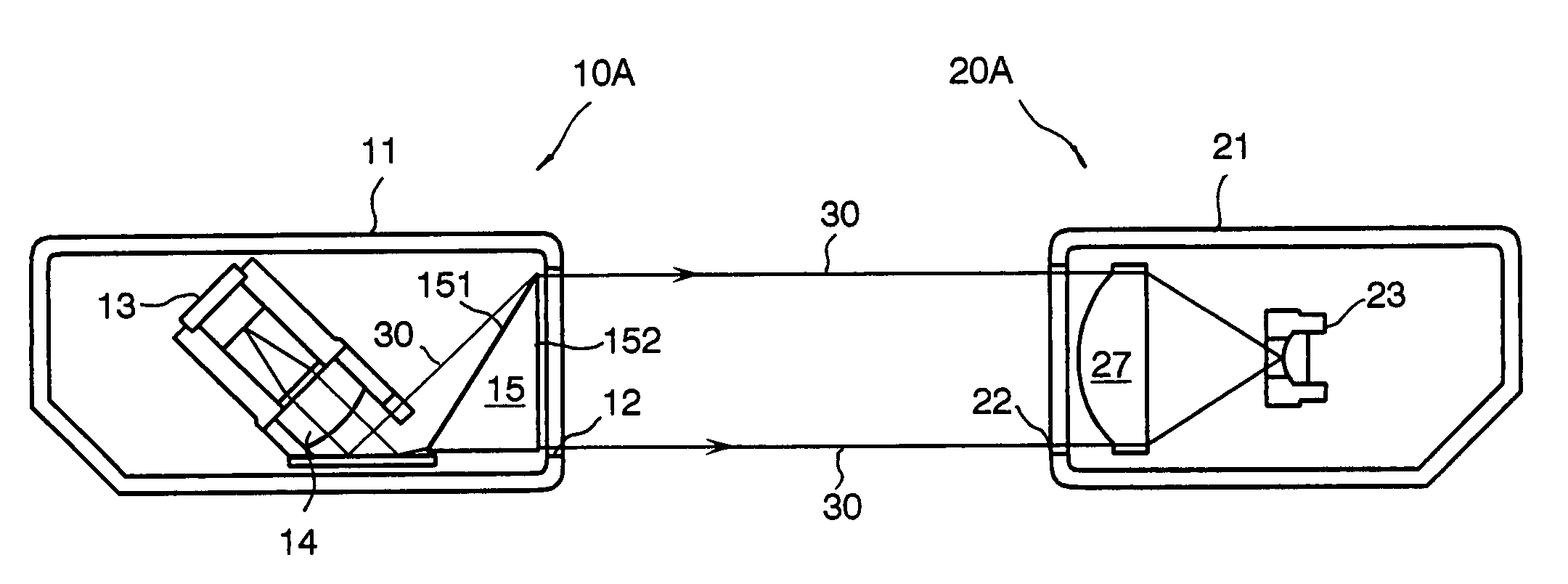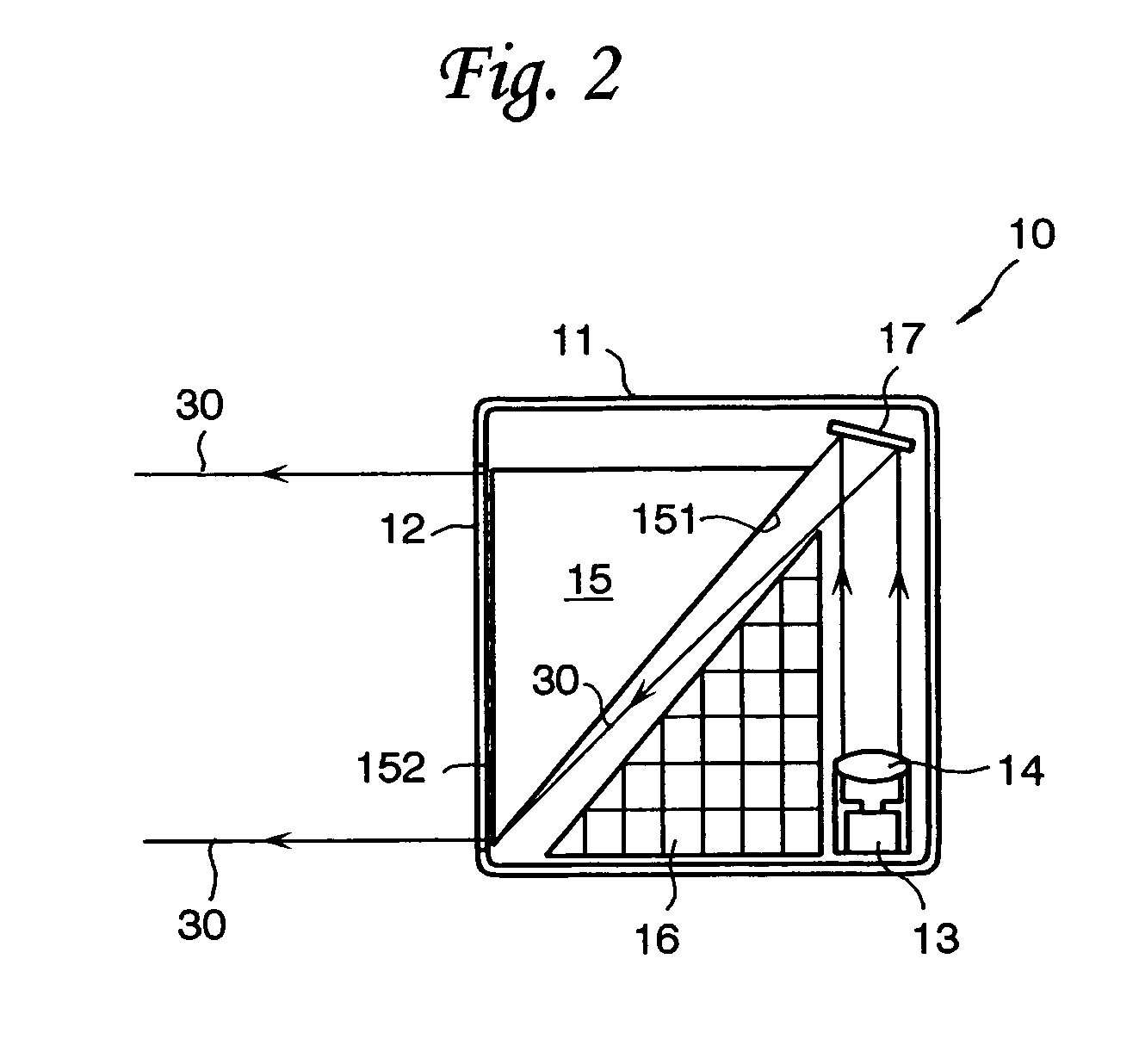Optical sensor having light projecting prism
a technology of optical sensors and prisms, applied in the field of optical sensors, can solve the problems of deterioration of detection sensitivity and accuracy in some object positions, comparatively high cost of glass lenses, and inability to detect sizes, etc., and achieves the effect of accurate information detection, low cost, and simple structur
- Summary
- Abstract
- Description
- Claims
- Application Information
AI Technical Summary
Benefits of technology
Problems solved by technology
Method used
Image
Examples
Embodiment Construction
[0055]Referring to the drawings in detail, and, in particular, to FIG. 1 showing an internal structure of an optical sensor according to an embodiment of the present invention, the optical sensor comprises a light projection unit 10 and a light detection unit 20. The light projection unit 10 has a generally square housing 11 with an elongated window 12 formed in one of the walls thereof. In the housing 11, there are arranged a light source, namely a light emitting element 13 such as a laser diode, a collimator lens 14, a light projecting prism 15 made of a right angle glass block, a circuit board 16 having a right triangle shape on which a drive circuit for the light emitting element 13 is formed, and a reflecting mirror 17. Specifically, the light emitting element 13 is positioned in one of the corners of the housing so as to emit light rays. The collimator lens 14 collimates the light rays from the light emitting element 13 and directs the light rays toward the reflecting mirror 1...
PUM
 Login to View More
Login to View More Abstract
Description
Claims
Application Information
 Login to View More
Login to View More - R&D
- Intellectual Property
- Life Sciences
- Materials
- Tech Scout
- Unparalleled Data Quality
- Higher Quality Content
- 60% Fewer Hallucinations
Browse by: Latest US Patents, China's latest patents, Technical Efficacy Thesaurus, Application Domain, Technology Topic, Popular Technical Reports.
© 2025 PatSnap. All rights reserved.Legal|Privacy policy|Modern Slavery Act Transparency Statement|Sitemap|About US| Contact US: help@patsnap.com



